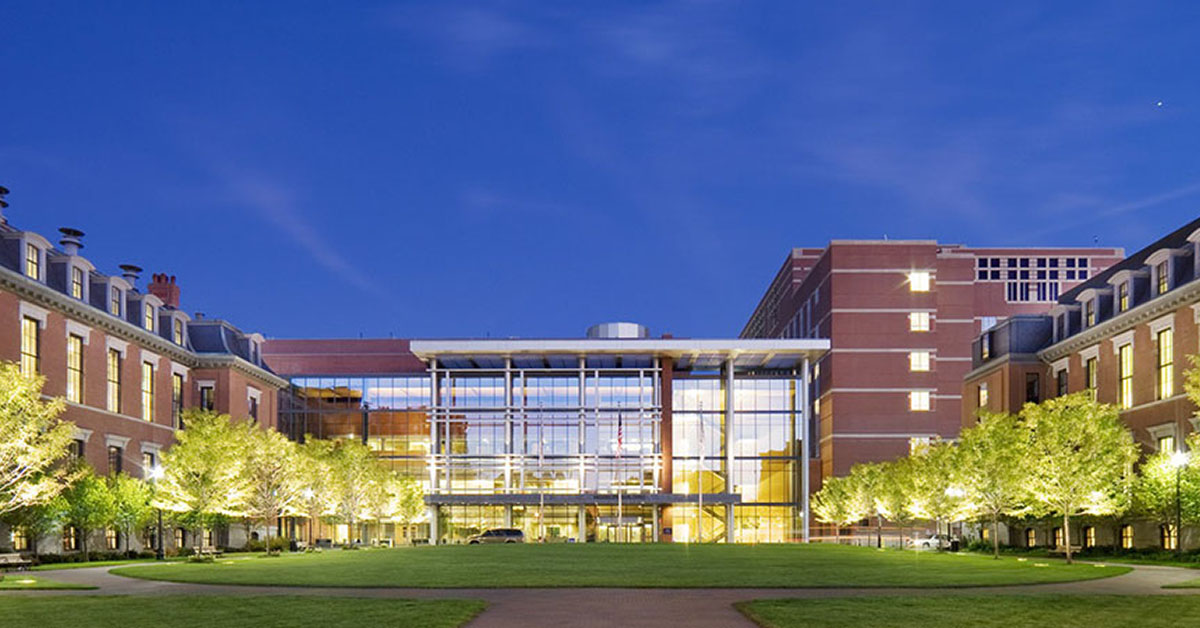
Boston Medical Center is the largest safety-net hospital in New England.
It’s also an award-winning academic medical center—including being named to the 2022 Becker’s Healthcare list of top 150 places to work in healthcare, ranked number 4 most racially inclusive hospital in the U.S. (and #1 in Massachusetts) by the Lown Institute, and named an age-friendly health system for its commitment to care excellence for older adults by the Institution for Healthcare Improvement.
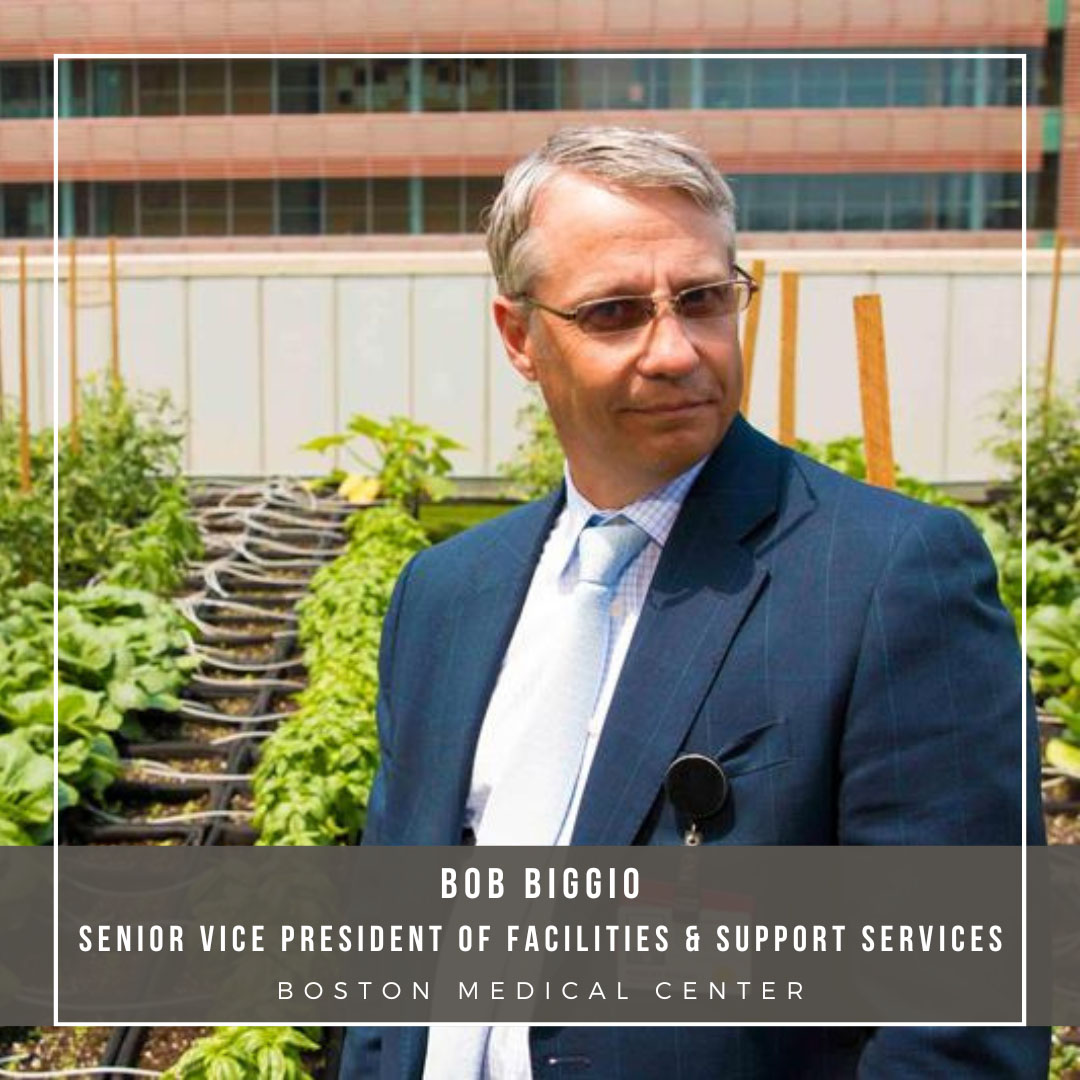
Bob Biggio, Senior Vice President of Facilities & Support Services, sat down with us to talk about BMC’s $300 million campus redesign, the philosophy behind its commitment to the community and the environment, and its new net-zero inpatient behavioral health facility.
When Biggio took the job at BMC, located in Boston’s historic South End, it comprised two campuses separated by one city block. He said the fact that BMC was a safety-net hospital—providing healthcare for individuals regardless of their insurance status or ability to pay—was what drew him to the job. He had started his career in a similar community hospital setting. At the same time, Massachusetts was at the forefront of healthcare reform.
Biggio said, “the goal of [Massachusetts] healthcare reform is to make healthcare accessible and affordable to the population that we served for almost 200 years now. I came to BMC because I saw an opportunity to help create a proof of concept showing that healthcare reform could work, in that healthcare can be both affordable and high quality for everybody.”
BMC was on the brink of receivership when Biggio started, and right out of the gate BMC President and CEO Kate Walsh tasked him with creating a real estate strategy for the organization. After six months of studying BMC’s real estate portfolio—how it was utilized and supporting the organization’s mission—he presented Walsh with his first impressions.
Biggio determined the building footprint was 400,000 square feet bigger than it needed to be, given the patient volume; that it cost the organization $25–35 million a year in overhead expenses and inefficiencies; and that it would cost $300–400 million to fix it.
“You know what her response was?” asked Biggio. “You should keep going with that.”
And go with it, he did. About nine months later, he ran his campus redesign plan for the $400 million indoor investment by the board. Their response was not as favorable as Walsh’s initial response. They were surprised that he suggested that level of investment when the organization was running in the red. The board’s initial reaction was, basically, no way are we doing this.
But Biggio wasn’t defeated. He explained that the organization would save $25 million a year in overhead costs by consolidating the two properties into one efficient footprint. On top of that, they could sell the unused real estate for $180 million.
“If you do that math, that was a pretty good payback,” said Biggio.
That math convinced the board, and his initiative was launched in 2013. Five years later, BMC consolidated into its new, state-of-the-art campus. Today, BMC is among the newest hospital facilities in the city of Boston. They have a new emergency department (ED), radiology department, and intensive care units. Not what you typically think of when you imagine a safety net hospital.
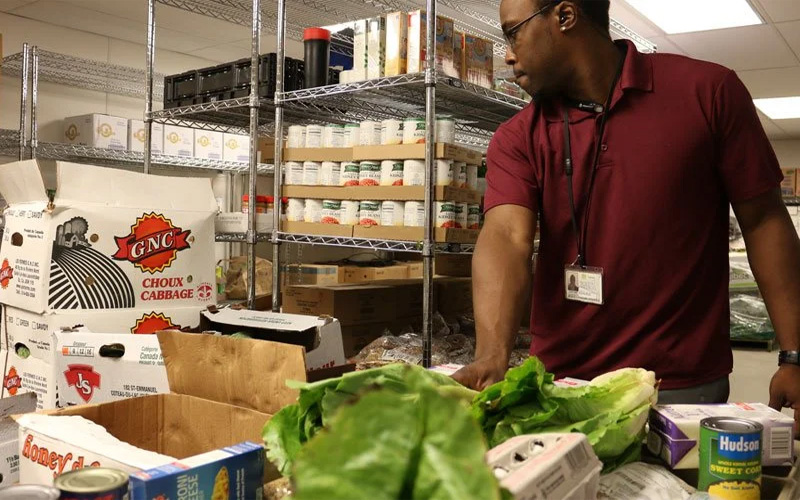
Revolutionizing Preventive Care in the Community
BMC’s food pantry, a service that pre-dated the redesign, played a key role in BMC’s philosophy around caring for the community. Pediatricians saw patients coming into the center with all types of ailments, but they determined that malnutrition was the underlying cause of many of them.
In keeping with the philosophy behind healthcare reform—being proactive and keeping patients healthy—BMC established a Preventive Food Pantry. Based on the idea that if one family member is malnourished, the whole family is probably suffering as well, the Pantry feeds the entire family. Doctors write a prescription for food tailored to their patient’s dietary needs, which can then be filled at the pantry.
The pantry operates like a health clinic and demonstrates BMCs commitment to the community. Patients enter the Pantry’s waiting room, where they present their prescriptions. From there, they are invited into a private consult area. An assortment of food, specifically selected based on the doctor’s prescription, has been laid out, and adjustments can be made to accommodate the family’s preferences.
The next obvious step from the food pantry was the creation of a demonstration kitchen. There, a chef could teach the community how to prepare their food. In the pre-campus-design days, that kitchen was tucked back in the bowels of one of the oldest buildings.
“I believe in symbolism, and to me, that program was so symbolic of who BMC is and what they are trying to do that it needed to be much more prominent,” said Biggio.
Today that teaching kitchen is proudly on display behind a glass wall in the Center’s main cafeteria.
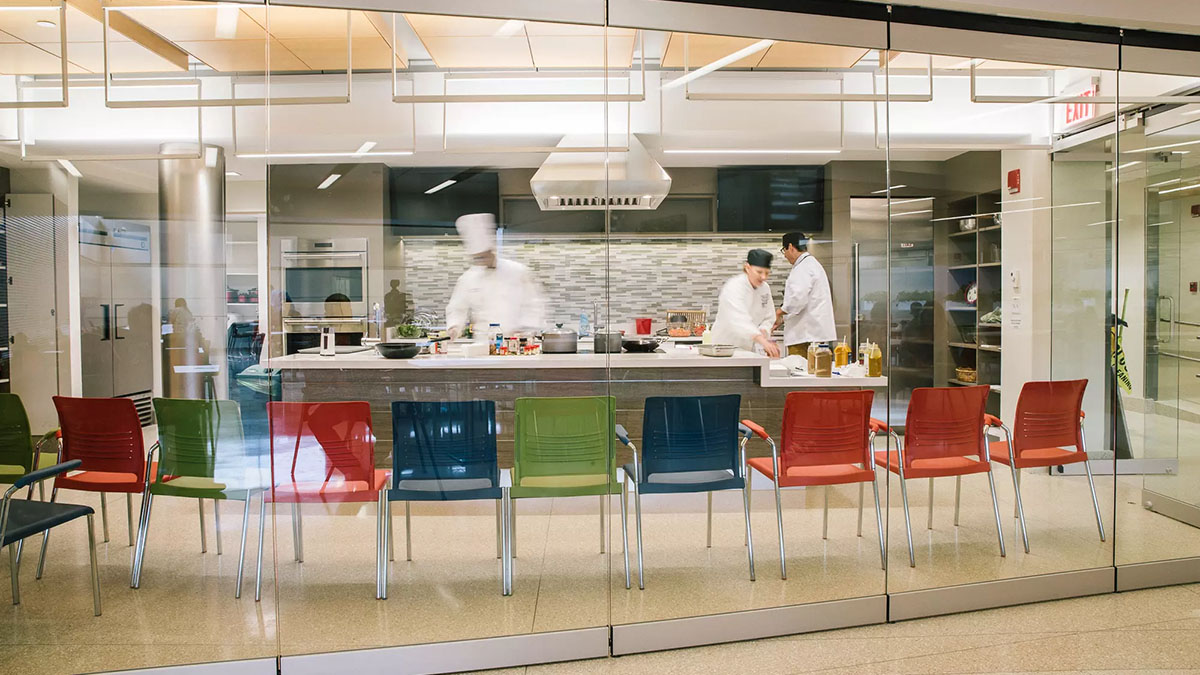
“People come from all around, including our staff, to participate in the demonstration kitchen’s cooking classes,” said Biggio.
When Covid hit, BMC continued with the classes but presented them online via video. That idea stuck, and classes are still offered online as an alternative to their in-person classes.
Yet even with all of these improvements, there was still a piece missing.
“I started thinking: wouldn’t it be great if we could have our own farm where we grow some of our own healthy produce?” said Biggio.
BMC’s vice president of development got wind of Biggio’s idea and suggested they float the farm idea at the annual “food for thought” fundraising dinner. According to Biggio, the deal was that if they could raise enough money at the November dinner, he would have the farm up and running by spring.
To his surprise, $250,000 was raised and the following April Biggio had a farm on the roof of BMC’s power plant. Today, it produces about 6,000 pounds of food that goes directly to the pantry and is used in the demonstration kitchen, cafeteria, and on patient meal trays.
During the summer, Boston public school students learn how to grow and harvest their own food at the farm and then learn how to prepare it healthfully in the demonstration kitchen.
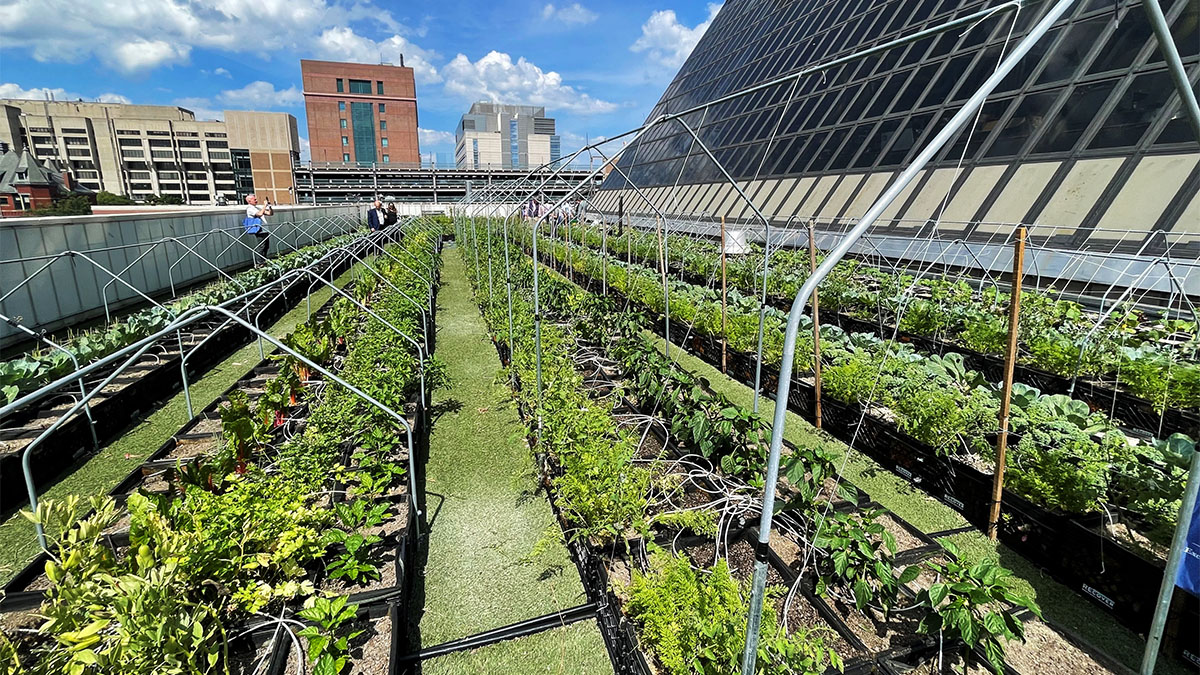
Building a Net-Zero Behavioral Health Center
One thing BMC was still severely short on despite the redesign was behavioral health beds. BMC is undoubtedly not alone in this, as communities across the country are grappling with their own shortages.
“When the Department of Public Mental Health did a walkthrough this week, they told us that on that very day 120 patients were being held in emergency rooms across the state waiting for a behavioral health bed to come available,” said Biggio. “Massachusetts is a small state. That’s a lot of patients sitting in an emergency room on just one day.”
However, Biggio and BMC already had a plan underway for the shortage.
BMC was already widely recognized as a leader in behavioral health and substance use disorders treatment. However, while they had an extensive outpatient program, they did not have an inpatient treatment center.
“To properly care for the community, we felt we needed behavioral health beds to build out a full continuum of care for substance use disorder treatment.” said Biggio. “But the unfortunate fact in this country is that behavioral health reimbursement rates are much lower than medical care. From a real estate perspective, it’s extremely difficult to make the financials work in an expensive city like Boston.”
So Biggio began looking outside the city and into surrounding communities to find a site that would enable BMC to take that next step. They ended up finding a shuttered building that originally housed a nursing home that was going up for auction. The complex, just 20 miles south of the BMC campus, sat on a 4.5-acre site already zoned for hospital use and central to the population covered by BMC’s health plan. Biggio estimates a similar footprint in the city would have cost at least five times as much.
As for building a net-zero facility, Biggio explained, “What healthcare reform is asking of us is to be more proactive in preventing these populations from getting sick and having substance use issues.”
And remember, he’s also a big believer in symbolism—that what people see is how they perceive you. So, what better place to start than the environment?
“The environment that your community lives, breathes, and surrounds themselves in—it was a very important part of our overall strategy to be as environmentally sustainable as possible.”
As many of you reading this are well aware, behavioral health’s best-case scenario is that it breaks even. Often you will lose money year over year.
“Anything we can do to make the cost as low as possible in the future, we should do to make it mutually sustainable. Behavioral health facilities are the perfect candidate for net-zero opportunities. It’s hard in an acute care environment because the infrastructure requirements are more intensive. Making our behavioral health facility net zero was ideal.”
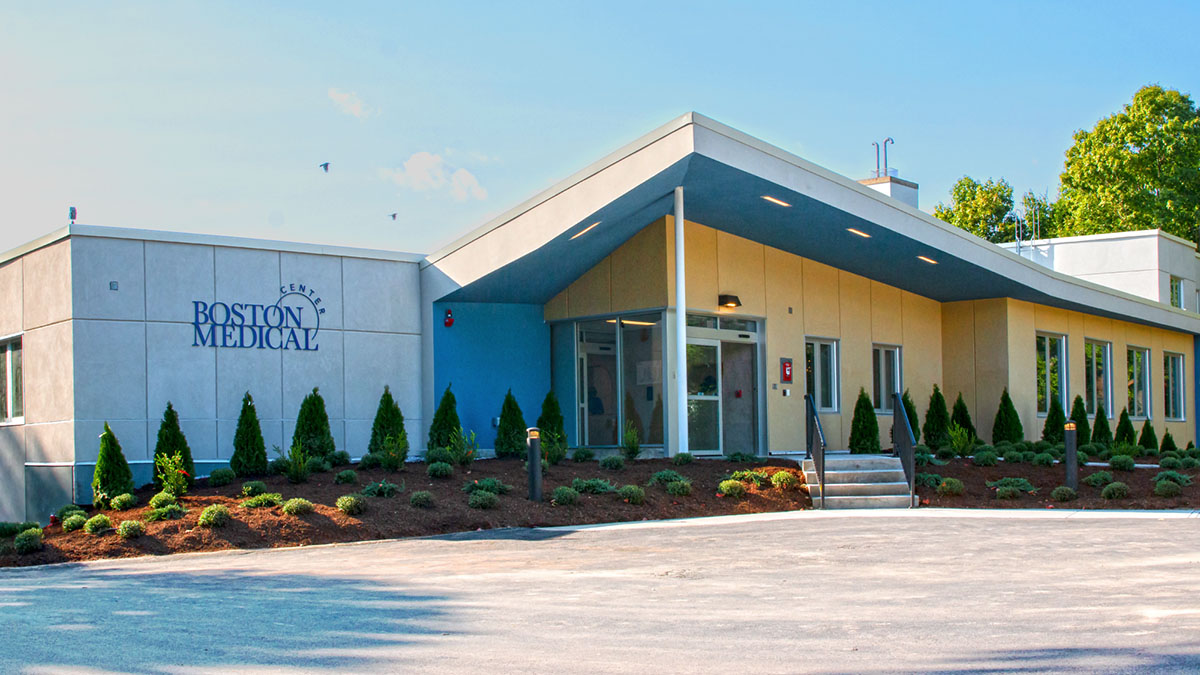
Today, that original building built in 1972 has been transformed into the Brockton Behavioral Health Center. It features two 28-bed inpatient behavioral health units and one 26-bed clinical stabilization unit that acts as the next step in the patient’s substance use disorder treatment.
Biggio said, “One of the things lacking in the system, in addition to a shortage of beds in general, is dual diagnosis beds. Often, behavioral health units will take someone with behavioral health issues but not a co-occurring substance use disorder. Most people with substance use issues also have behavioral health issues. So you end up with a lot of beds that are completely closed off to anyone with a substance use issue or even a history of one. This new facility with dual diagnosis can take either type of patient.”
Getting those patients out of the emergency department quickly and into a facility better set up to treat them and give them the proper care they need is good for everyone: the people presenting with behavioral health struggles, the ED staff, and patients who need services the ED is designed to provide.
Building a Better Future
When you talk to Biggio, you can almost see the wheels turning in his mind and watch as he works the math out in his head. So, it’s no surprise that when we asked what he had in store for the near future, it turned out he was working on another redevelopment. A campus that will provide a full continuum of care for those with substance use disorders, behavioral health, and homelessness.
Remember that building he sold as part of their consolidation plan? Biggio said that the state of Massachusetts ended up purchasing and is in the process of refurbishing it to replace a state hospital facility also caring for underserved communities.
“It ended up saving the state significant capital to be able to do that instead of building a new campus where the state hospital currently was.”
That means in 2025 when the state commissions the renovated building, there will be a vacated state hospital in a park-like setting. The deed requires the property’s continued use for public health. So, when the state put out a request for proposals (RFP) for the redevelopment, BMC jumped on it.
“We submitted an RFP in collaboration with several other like-minded nonprofits that serve our patient population. To turn it into the ideal facility for a full continuum of care, including housing. But to do it in a way that is both sustainable from a financial and environmental perspective and to try to do it as a net-zero facility.”
While the project has not yet been awarded, and Biggio expects it will be a few more months before they hear any news, he’s excited about the opportunity.
“It’s an opportunity to do something that could really be transformative for the patient population we serve.”
We’ve got our fingers crossed for Biggio and hope BMC can build on the fantastic work it is already doing for the community. We’re willing to bet that if BMC is awarded the project, there will be an even bigger farm in BMC’s future.
